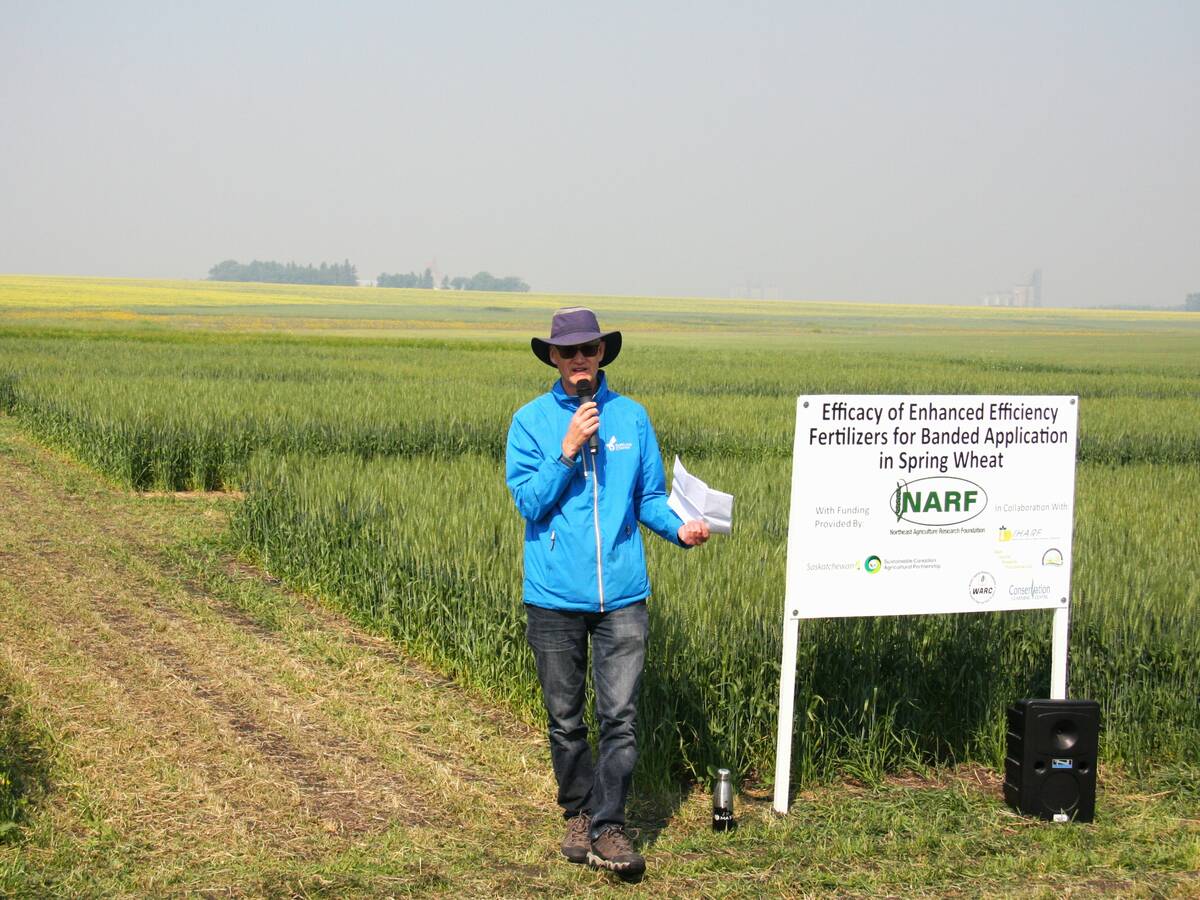ROSTHERN, Sask. – Farmers must be more educated than ever about what they put in their spray tanks, says a University of Saskatchewan researcher.
Speaking at a direct-seeding demonstration at the Seager-Wheeler historic farm near Rosthern, Ken Sapsford said producers will have more varieties to choose from as they decide what herbicides to apply to their fields.
He said this is a result of growth in private label and generic brands.
Chemicals have been developed in the last five years, but Sapsford said most changes are the result of blends as well as new trade names applied to familiar chemicals.
Read Also

Fertilizer method’s link to emissions studied
A researcher says others studying greenhouse gas emissions aren’t considering how the loss of nitrogen into the atmosphere correlates with fertilizer application or if there is an impact to yield.
Sapsford said farmers need to be aware of the active ingredients in their herbicides.
A different trade name on a chemical does not necessarily mean a different active ingredient.
“You’re going to have to know active ingredients. Active ingredients are what’s happening out there with all the generics coming out,” he said.
Knowing a herbicide’s mode of action will also be important.
“You’re going to have to make sure you know that once you have resistant weeds. We have some Group 2 and Group 1-resistant wild oats already showing up on a field close to Rosthern. You need to know what’s out there.”
Glyphosate-resistant kochia has already been found in the United States and will almost inevitably make its way north, he added.
Sapsford said more knowledgeable producers will result in better herbicide rotations, which in turn will mean less resistant weeds.














